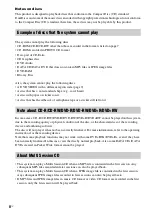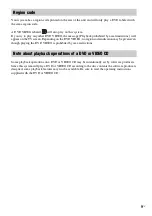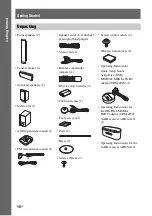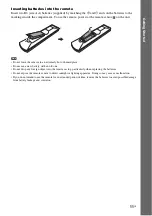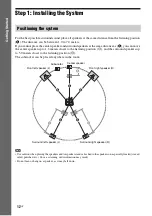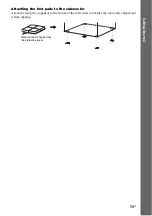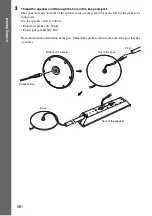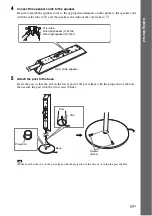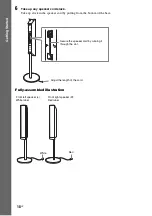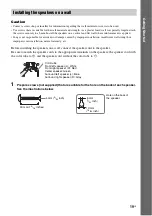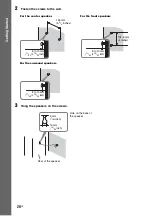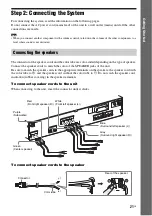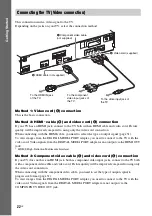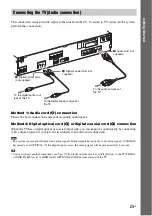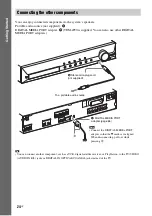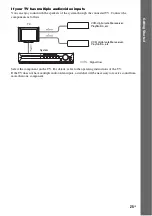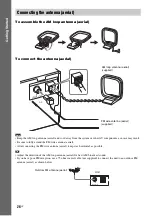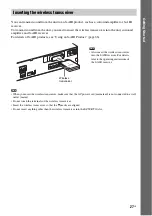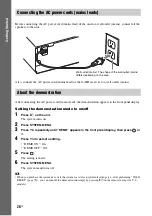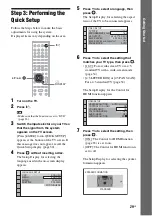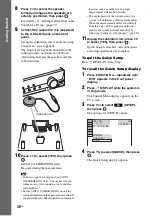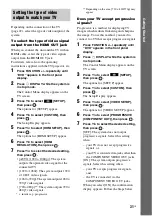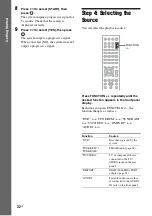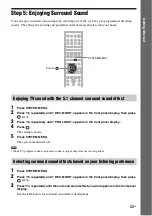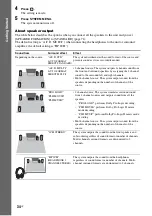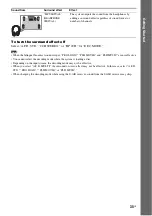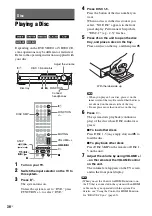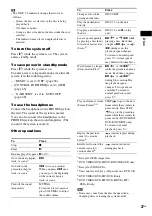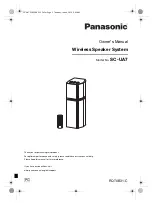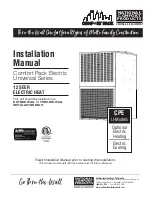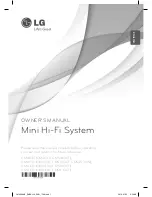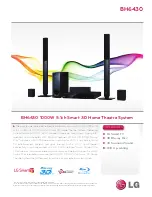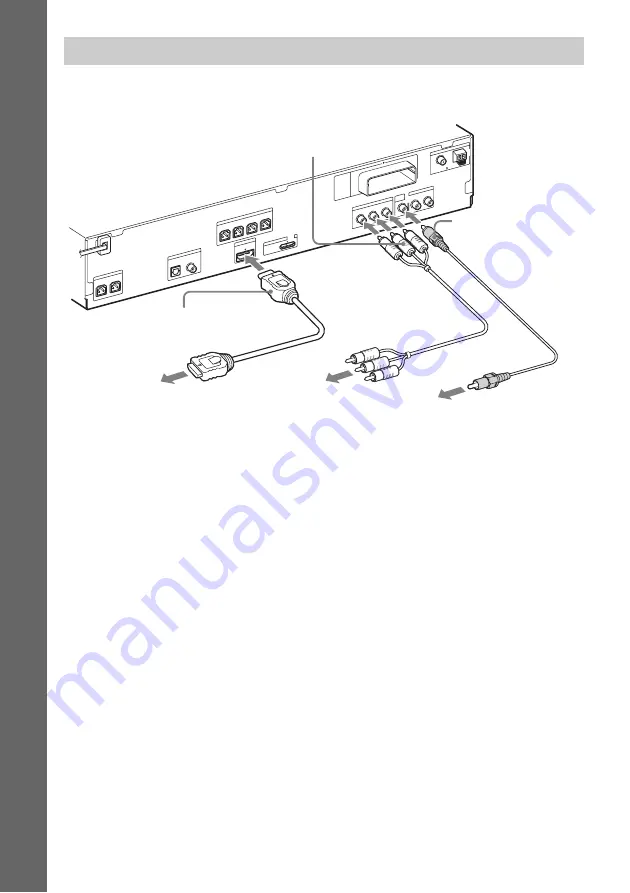
22
US
Gettin
g
Star
ted
This connection sends a video signal to the TV.
Depending on the jacks on your TV, select the connection method.
Method 1: Video cord (
A
) connection
This is the basic connection.
Method 2: HDMI
*
cable (
B
) and video cord (
A
) connection
If your TV has an HDMI jack, connect to the TV both with an HDMI cable and video cord. Picture
quality will be improved compared to using only the video cord connection.
When connecting with the HDMI cable, you need to select the type of output signal (page 31).
To view images from the DIGITAL MEDIA PORT adapter, you need to connect to the TV with the
video cord. Video signals from the DIGITAL MEDIA PORT adapter are not output via the HDMI OUT
jack.
* HDMI (High-Definition Multimedia Interface)
Method 3: Component video cable (
C
) and video cord (
A
) connection
If your TV does not have an HDMI jack, but has component video input jacks, connect to the TV both
with a component video cable and video cord. Picture quality will be improved compared to using only
the video cord connection.
When connecting with the component video cable, you need to set the type of output signal to
progressive format (page 31).
To view images from the DIGITAL MEDIA PORT adapter, you need to connect to the TV with the
video cord. Video signals from the DIGITAL MEDIA PORT adapter are not output via the
COMPONENT VIDEO OUT jack.
Connecting the TV (Video connection)
CENTER
SUBW
OOFE
R
HDM
I OUT
SPEA
KER
COAXIAL 75
AM
FM
ANTE
NNA
DMP
ORT
DC5V
0.7A M
AX
AUDIO IN
PB/C
B
PR/C
R
Y
L
R
VIDEO
OUT
TV/VIDEO
COM
PONE
NT VI
DEO
OUT
DIGITAL IN
COAXIAL
OPTICAL
TV
FRONT R
FRONT L
SUR R
SUR L
SPEA
KER
EZW-
RT10
To the HDMI IN jack
of the TV.
To the video input jack of
the TV.
A
Video cord (supplied)
B
HDMI cable (not supplied)
To the component
video input jacks of
the TV.
C
Component video cable
(not supplied)

